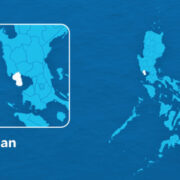PLDT sees Apricot subsea fiber optic cable online in 2027

The entire 12,000-kilometer (km) Apricot undersea cable system is slated to be completed by 2027, according to PLDT Inc., which will allow it to improve the delivery of its internet services.
Benedict Patrick Alcoseba, PLDT first vice president, said the submarine cable project would increase the company’s international data capacity.
“We will have more connections so that there’s more resiliency and more capacity and more stable internet,” he told reporters last week in Manila.
The fiber optic cable project links the Philippines to Japan, Singapore, Indonesia, Taiwan and Guam. This subsea system is seen to ramp up its international data capacity by 33 percent to over 140 terabits per second.
PLDT said last month that it had activated the landing stations at Aurora and Davao.
Moving forward, Alcoseba said they were “looking at two or three more” subsea cable projects to beef up capacity.
“Before we have Apricot cable up, we should be able to do the pipelining for the future cables,” he said.
Submarine fiber networks facilitate data traffic across several points in the world, improving access to the internet.
Apart from Apricot, PLDT is also working on the 10,000-km Asia Direct Cable (ADC) project, which traverses East and Southeast Asia.
The ADC connects the Philippines to Tuas, Singapore; Chung Hom Kok, Hong Kong; Maruyama, Japan; Quy Nhon, Vietnam; Sri Racha, Thailand; and Shantou, China.
In 2022, the Pangilinan-led company activated the US-Transpacific Jupiter project, which is a 14,000-km cable system linking Daet, Camarines Norte, and Japan.
To complement these infrastructure projects, PLDT has also been investing in data centers, which are hubs that house critical servers and networks.





















